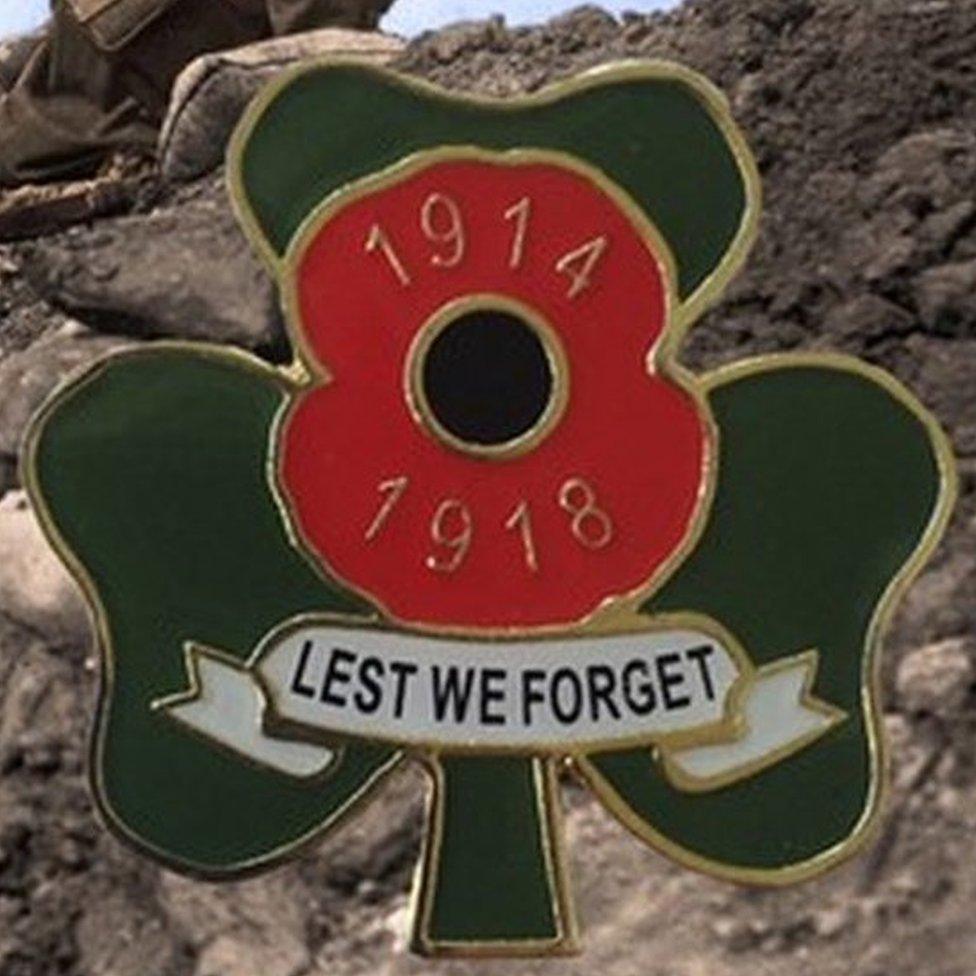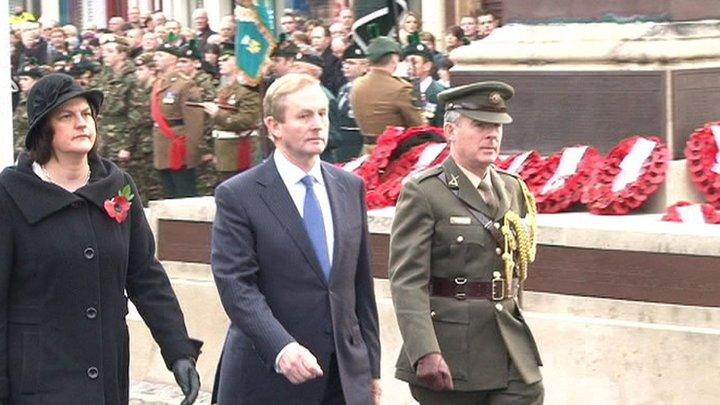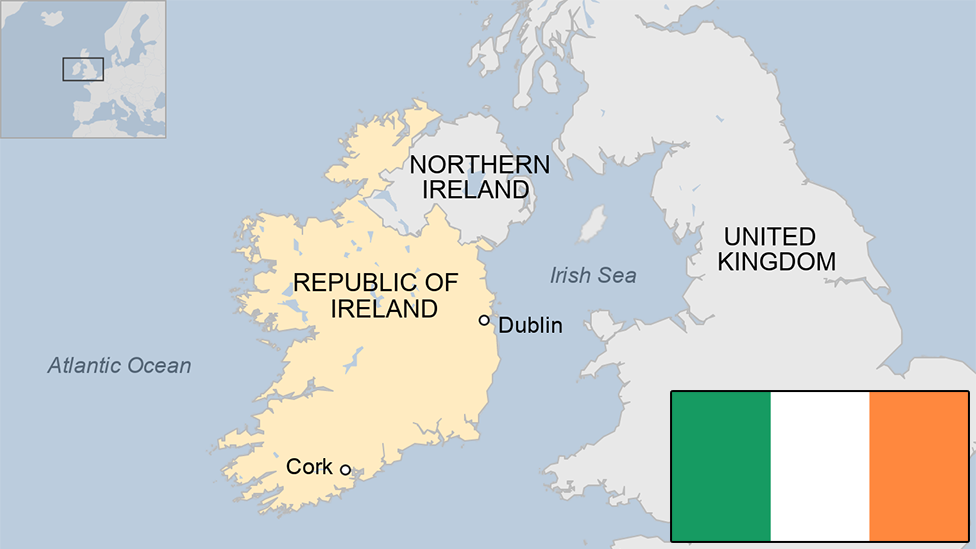Irish PM wears 'shamrock poppy' in parliament
- Published

Taoiseach Leo Varadkar appeared with the "Shamrock Poppy" in parliament
The prime minister of the Republic of Ireland has worn an Irish-themed red poppy badge to remember Irish soldiers who fought in World War One.
Taoiseach Leo Varadkar appeared with the "shamrock poppy" in the Dáil - the parliament in the capital, Dublin.
He is the first leader of the Fine Gael political party to do this.
The move has triggered debate about how more than 200,000 Irish soldiers who served in the British Army are remembered.
Between 1914 and 1918, some 35,000 of them died.
"The Shamrock Poppy recognises Irish soldiers who fought in World War One," a spokesman for Mr Varadkar said.
"It was commissioned to commemorate the 100th anniversary of the Great War by the Irish branch of the Royal British Legion.
"Proceeds from the Shamrock Poppy go to Irish veterans and their families, and towards the upkeep to memorials to Irish soldiers in Ireland. All money stays in Ireland," the spokesman said.

The Shamrock Poppy worn by the Irish PM
In 2012, Mr Varadkar's predecessor Enda Kenny attended a Remembrance Sunday service in Enniskillen, Northern Ireland.
A green shamrock is traditionally used as a symbol of the Irish people.
A red poppy - known as the remembrance poppy - has been used in the UK and several other countries to commemorate servicemen and women killed in all conflicts.
In April 1916, Irish republicans led an armed insurrection to end British rule.
The Anglo-Irish war in 1919-21 led to the partition of Ireland and the creation of the Irish Free State. The Republic of Ireland was declared in 1949.
- Published11 November 2012

- Published7 February
